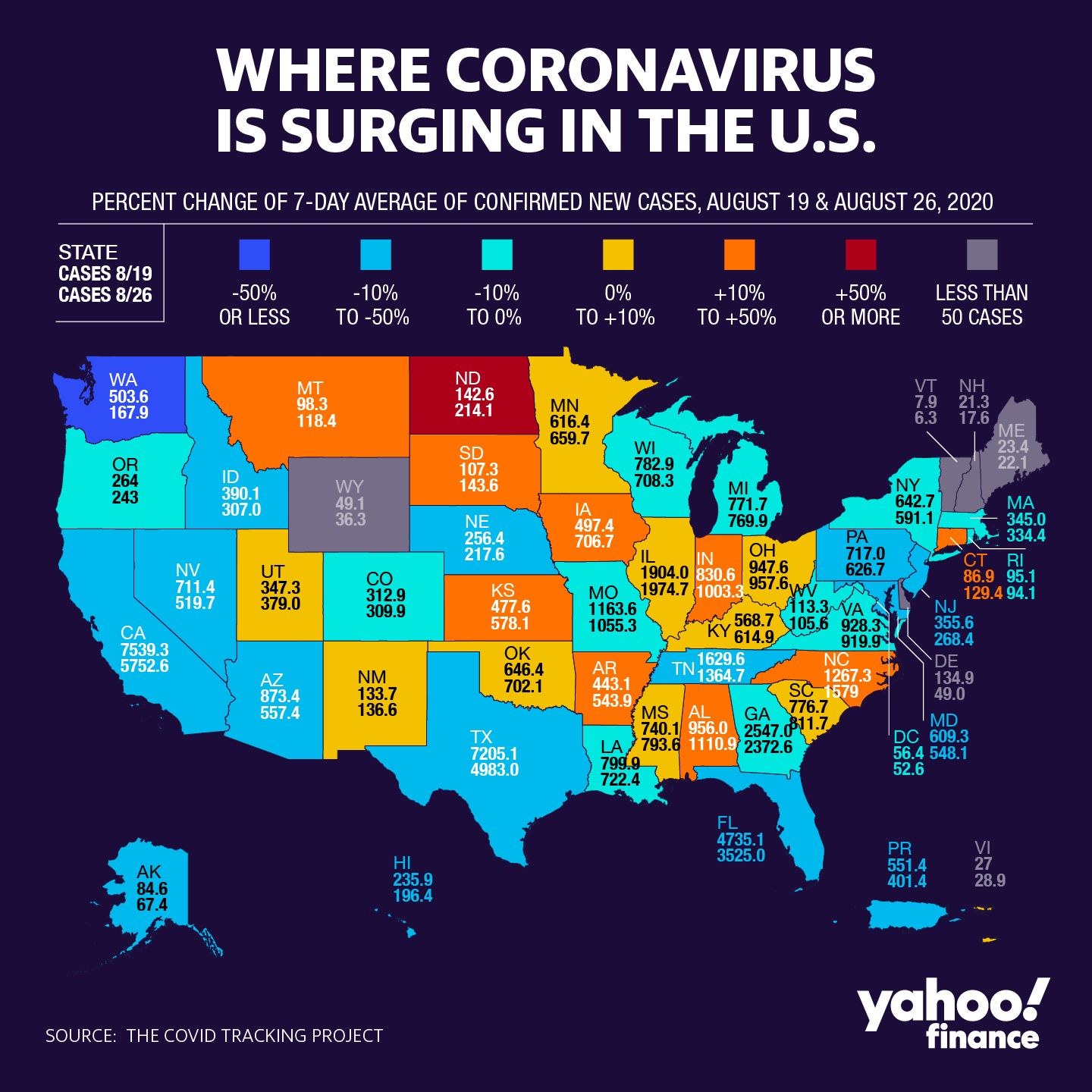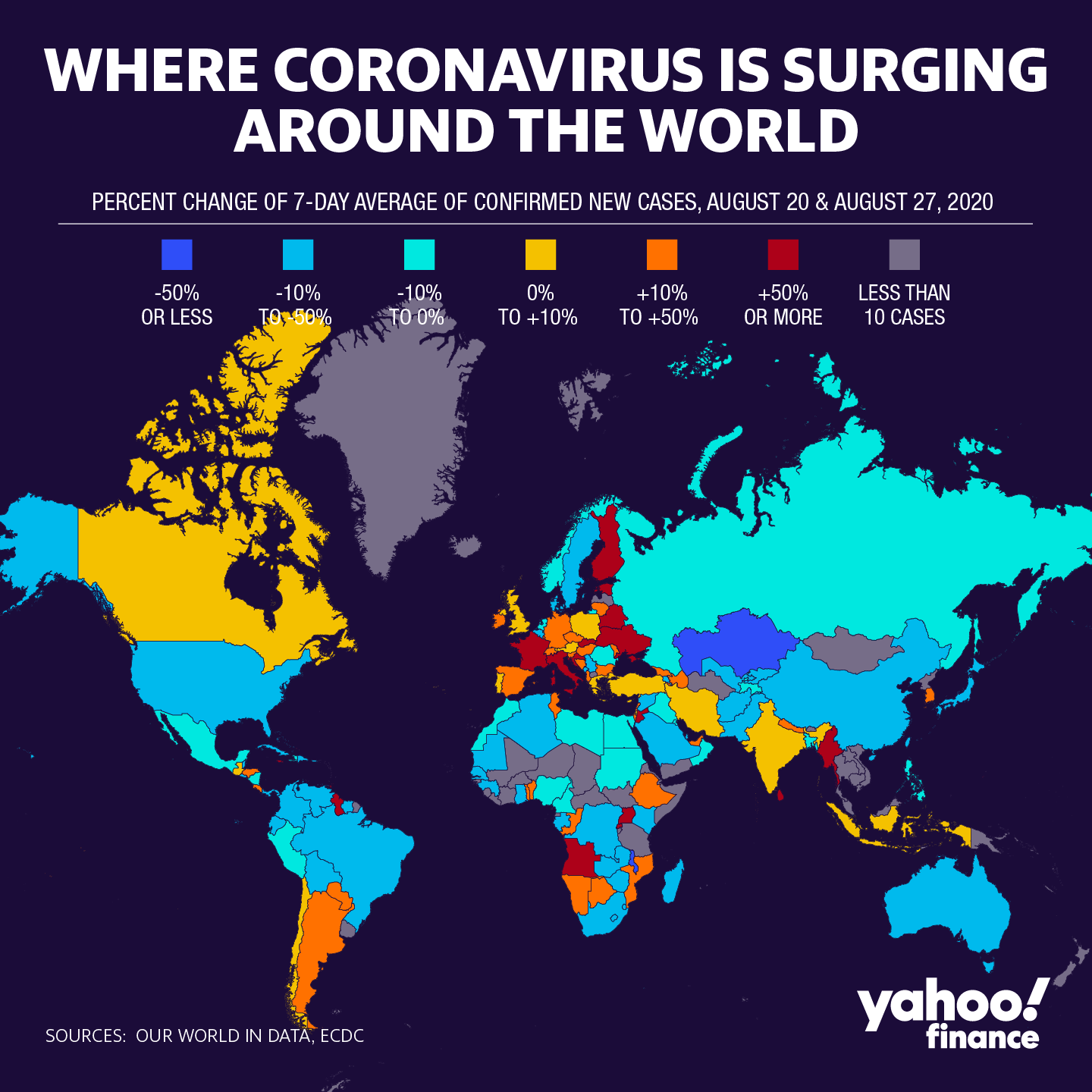| ||||||||||||
| ||||||||||||
| ||||||||||||
| ||||||||||||
| ||||||||||||
| ||||||||||||
| ||||||||||||
| ||||||||||||
| ||||||||||||
| ||||||||||||
| ||||||||||||
| ||||||||||||
| ||||||||||||
| ||||||||||||
| ||||||||||||
| ||||||||||||
In the wake of a recent report from the American Academy of Pediatrics revealing that cases of the coronavirus are increasing faster among kids than adults, new research is shedding light on how it manifests in young people — and what’s needed to ensure that they’re not silently spreading the virus.
The study, published in JAMA Pediatrics on Friday, followed 91 kids in South Korea with confirmed cases of the infection from Feb. 18 to March 31. Much like reports showing that 40 percent of adults may not show any symptoms, a significant number of kids tested positive without showing any signs of the virus. Of the 91 total, 20 were completely asymptomatic (i.e., showed no symptoms of the virus), 18 were presymptomatic (i.e., developed symptoms later) and 53 had symptoms, most of which were mild or moderate.
The data, collected from 22 health centers, relied heavily on South Korea’s aggressive contact tracing program, and subsequent testing of those in exposed households (including those without symptoms). Relying only on symptomatic testing, the authors write, would have led them to miss 93 percent of the cases. It’s a conclusion that could have implications for transmission. “Infected children may be more likely to go unnoticed either with or without symptoms and continue on with their usual activities, which may contribute to viral circulation within their community,” the authors conclude.
In an accompanying editorial to the study, Dr. Meghan Delaney, chief of pathology and laboratory medicine at Children’s National Medical Center in Washington, D.C., notes that the U.S. is not set up to identify asymptomatic kids — which may be making the pandemic worse. “A surveillance strategy that tests only symptomatic children will fail to identify children who are silently shedding virus while moving about their community and schools,” say Delaney and her co-author, pediatric infectious disease specialist Dr. Roberta L. DeBiasi. “In regions where use of face masks is not widely accepted or used by the general public, asymptomatic carriers may serve as an important reservoir that may facilitate silent spread through a community.”
Delaney — who has been testing kids at Children’s National since March — says that the lack of focus on kids and coronavirus has perpetuated dangerous myths, such as the belief early on that they are somehow immune. “The previous oversimplification was that [kids] weren’t impacted when the truth is they are,” Delaney tells Yahoo Life. “However, when you compare a group of children to a group of adults, we do find that the adults are more likely to have serious disease, whereas children seem less likely.”

While she finds the lack of severe illness in kids promising, she echoes the researchers from South Korea in noting the potential implications of a high number of asymptomatic and presymptomatic kids. “They were able to see kids living in the home who were probably acting just fine ... but some of them actually had the virus,” says Delaney. “Some of them became symptomatic and some of them didn’t.”
This could affect how the virus spreads through schools, especially in light of updated guidelines from the Centers for Disease Control and Prevention suggesting individuals who have no symptoms don’t need a test. “This [study] might mean that there are children in the community here in the United States who are not symptomatic, who have the virus, and are not either not sick at all or [have] very mild illness,” says Delaney.
Dr. Dara Kass, Yahoo Life medical contributor, says that schools should take note of the findings. “Children in school, because of the prevalence of asymptomatic and presymptomatic cases, are good candidates for surveillance,” she says. “But if you’re not doing surveillance, you certainly need to [have] mask wearing.”
Kass notes that another important aspect of the study is its focus on the viral shedding — meaning how long the body may be releasing the virus (through sneezing and coughing, for example). As a final data point, the researchers measured the number of days of viral shedding and found an overall average of 17. The number was lower for asymptomatic kids (a mean of 14.1 days) and higher in symptomatic kids, with at least half that demographic still showing the presence of the virus at 21 days.
The finding is an important window into how long the coronavirus may linger in kids’ respiratory systems, but Delaney points out an important distinction: Even though someone may still be shedding a virus, that doesn’t mean it’s enough virus to actually be contagious. “The tests that we’re doing here, what we're looking for are the genes of the virus ... so if we detect any viral genes, the test is going to be positive,” says Delaney. “What we do think is that over time your body’s immune system is fighting that virus and what we might be detecting at the end of an infection ... are just remnants. The virus has been activated and the immune system has destroyed it, but yet there’s still viral kind of junk around in your body.”
Delaney is hopeful that areas of the U.S. can ramp up contact tracing in order to perform similar studies, and cautions against oversimplifying the results in the meantime. Kass agrees and stresses the need for universal mask wearing until surveillance is being regularly performed. “If we don’t know enough about how long you’re contagious — and there’s a period of time by which you’re not symptomatic but contagious —then the best defense we have right now is mask wearing,” says Kass. “This article reiterates that point.”
More from Yahoo Style:
Marijuana use during pregnancy may be linked to increased risk of autism
Pulse oximeters are flying off shelves—here's what you need to know
Strokes, delirium and dizziness: Here's what we know about how the coronavirus can affect the brain
The rapid push toward a coronavirus vaccine is feed concerns among health experts, who fear the COVID-19 crisis response will be further polarized and undermined by political pressures.
Over the weekend, FDA Commissioner Stephen Hahn alarmed experts when, in an interview with the Financial Times, he suggested the regulatory body could approve a vaccine before Phase 3 trials are complete.
President Donald Trump, who is locked in a fierce reelection battle, has placed a high priority on a vaccine candidate being deployed by year’s end.
“It is up to the sponsor [vaccine developer] to apply for authorization or approval, and we make an adjudication of their application. If they do that before the end of Phase Three, we may find that appropriate. We may find that inappropriate, we will make a determination,” Hahn told FT.
A discussion about such a move, as well as in general vaccine approval, will be discussed with an outside advisory committee on October 22, the FDA recently announced.
Hahn’s comments, following what some called a “premature” emergency use authorization for convalescent plasma last week, adds to the wariness and sensitivities of the administration playing politics with public health.
Dr. Dara Kass, a Yahoo medical contributor, said Monday that Hahn’s statement is the opposite of reassurances he and his team have been providing that “only a safe vaccine” will get approval.
“The idea of actually approving a vaccine before Phase 3 trials are complete is unprecedented, but it’s also potentially unsafe,” Kass told Yahoo Finance on Monday.
Experts have warned that third phase is often the longest. The process cannot be condensed because of the length of time needed to observe the effects of the inoculation’s safety and durability, which are governed by regulation.

Similar concerns have risen from both Russia and China claiming to have effective vaccines. Those are being used by their militaries and other high-risk individuals in the population — all before completing, or in some cases even starting, Phase 3 trials.
“I just can’t imagine a scenario by which we would choose to follow Russia and China on anything else,” Kass said.
Dr. Howard Forman, a Yale University professor and health expert, told Yahoo Finance that it would be just like China and Russia if the U.S. were to authorize the use of a vaccine before human trials are complete.
“We have a vaccine now. In fact, we have many vaccines now. We just don’t know if they are safe and effective,” Forman said, adding that the standards of the FDA are what distinguish the U.S. from other countries.
If a vaccine were to be authorized — which, like plasma, could be revoked if adverse events are seen—it could undermine trust in vaccines, which is already a polarizing issue. Hahn himself acknowledged that last week in a series of Twitter posts.
Still, mounting political pressure have stoked concerns among experts over the past several weeks.
“The CDC and the FDA, in the past week, have both had to go back and walk back comments they have made about safety recommendations on testing or therapeutics based on political pressures they’ve had, where they’ve had to correct themselves,” Kass said. “That doesn’t help any public confidence in a vaccine when it comes out.”

The frontrunners in the U.S., Moderna (MRNA) and Pfizer (PFE), have said the earliest they will get some sort of indication of the effectiveness of their candidates will be by September, with Pfizer expecting regulatory review by October.
Meanwhile, companies in the race are working on distribution deals as soon as a vaccine is authorized or approved.
The latest deal in the works is from Novavax (NVAX), which received the largest federal funding award for vaccine development. Novavax has reached an agreement in principle with Canada to supply up to 76 million doses, according to a statement.
In the treatments space, GlaxoSmithKline (GSK) has announced its partnership with Vir Biotechnology (VIR) for— also a vaccine contender— began late-stage trials of their monoclonal antibody candidate. The duo are the latest to progress in their pursuit of an antibody treatment, which is seen as both a treatment and defense for the virus in the absence of a vaccine.
Anjalee Khemlani is a reporter at Yahoo Finance. Follow her on Twitter: @AnjKhem
More from Yahoo Finance:
Fauci: WHO 'imperfect but important' as coronavirus controversies batter agency
FL teacher explains why she retired because of coronavirus, doubts safe return to schools
How protests spurred Corporate America into action on race, inequality
Read the latest financial and business news from Yahoo Finance
Follow Yahoo Finance on Twitter, Facebook, Instagram, Flipboard, SmartNews, LinkedIn, YouTube.